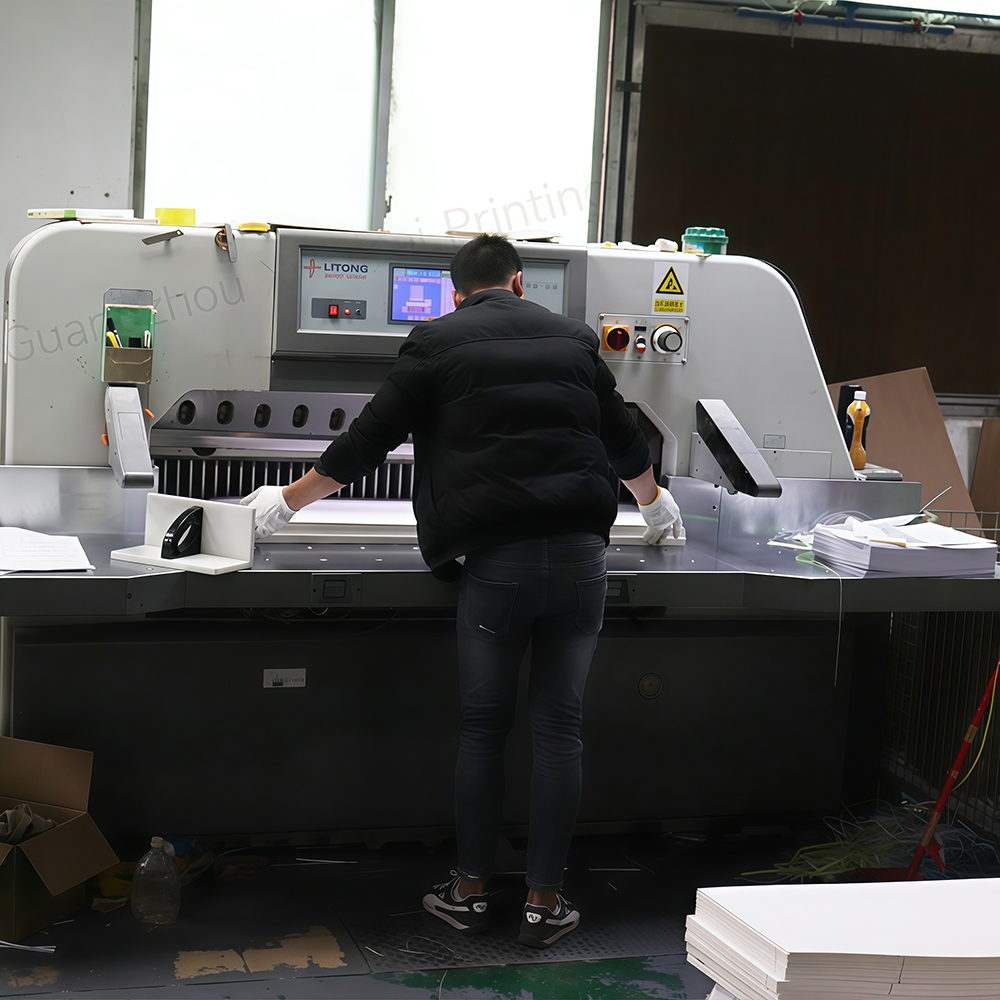Having been engaged in printing machinery maintenance for fifteen years, I have developed a set of diagnostic methods through continuous practice and exploration.

"Observation"
1. Observe the product quality
By observing and analyzing the quality of printed products, we can identify patterns and determine the cause of the problem. For example, if the printed product is brittle, we can suspect improper adjustment of the cylinder pressure; if the printed product has white streaks, we can suspect improper adjustment of the platen water roller; if the printed product has ink streaks, we can suspect improper adjustment of the platen ink roller; if the paper cutter is cutting crookedly, we can suspect improper adjustment of the stacker. Once, when printing a product on a Heidelberg four-color offset press, our factory encountered wrinkling in some areas. We observed the paper before press, and it was found to be very flat. A closer look at the wrinkled area revealed that, except for the first color, the second, third, and fourth colors were printed after the wrinkles appeared. Therefore, we determined that the wrinkling problem occurred between the first and second color groups. Between the first and second color groups, there is a double-diameter rear feed roller and two sets of front feed rollers, for a total of three rollers and four gripper groups. A careful inspection of the four gripper groups revealed inconsistent gripping force on one of the double-diameter rollers, with some grippers "dead." After appropriate adjustments were made to ensure consistent gripping force, the machine was tested, and the wrinkling of the printed product disappeared.
2. Check for signs of damage to components after a malfunction
After a malfunction, inspect the equipment for scratches, breaks, rubbing marks, or signs of compression to analyze the stress and determine the cause. Our Taipei-made two-color offset web press experienced ghosting on the black group, preventing normal printing. Inspections of the printing pressure, backing, drivetrain, and bearings were all normal. However, careful inspection revealed severe damage to the chrome plating on the operating surfaces of the black platemaking and blanket cylinders, with visible signs of compression. This ghosting was determined to be caused by excessive pressure from the shoulder iron on the cylinders, resulting in vibration, indicating an incorrect backing thickness. Upon inspection, we discovered that the thickness of the plate cylinder's lining had indeed been substandard for years due to improper operation. This resulted in the shoulder iron pressure exceeding the standard even when the cylinder's body pressure reached the standard. This long-term accumulation caused compression damage to the cylinder's surface coating, resulting in unstable cylinder movement and ghosting. Based on this analysis, we adjusted the lining of the plate and blanket cylinders to the standard configuration and then ran a test run, resolving the ghosting issue.
3. Verify the normal operation of all mechanisms during equipment operation
During a printing run, the front gauge tension spring of our Heidelberg four-color offset press suddenly broke, causing the locator bracket to misalign and all the locating pins to shear. After the incident, we thoroughly inspected all components and restored them to standard specifications. A subsequent test run revealed inconsistencies and irregularities in the printed product. The grippers of the locator were checked for uniform gripping force. A closer inspection revealed that the opening balls on each side of the locator gripper row entered the cam track at a significant misalignment. Diagnosis: The positioner's grippers were closing at inconsistent times when picking up paper from the feed plate and delivering it to the impression cylinder, causing paper transfer errors. Inspection of the positioning pin on the cam track revealed noticeable shear marks on the pin's surface. Although not severed, they were sufficient to cause positioning errors. After replacing the pin and retesting the machine, the inconsistencies disappeared.
"Smell"
Use your sense of hearing to determine if the equipment components are operating properly. If any unusual sounds are heard, locate the source to identify the cause and determine a suitable solution. The key to this method is to determine whether the sound is normal based on subtle differences. This method is often used to determine whether the machine's rotating components are operating in balance, whether fasteners are loose, whether interlocking moving parts are properly aligned, and whether there is significant wear.
"Ask"
"Ask" primarily involves inquiring with two types of personnel.
1. Inquiring with the machine operator. This primarily involves: ① Any abnormal phenomena prior to the fault; ② The process of the fault; ③ Whether measures were taken after the fault occurred, what measures were taken, and what were the results.
2. Inquire with relevant personnel who have repaired or handled similar faults with this model. This primarily involves: ① The fault symptoms and causes; ② The treatment methods and results. This inquiry can provide a reference for determining the cause of the fault and reduce detours in troubleshooting. However, avoid blindly following others' ideas and limiting your own thinking and imagination. Don't blindly copy others' methods and ideas. When repairing equipment, it's common to encounter faults that appear similar but have different causes and mechanisms. "Inquiry" is only a supplementary tool; the most important thing is to use your own brain and practice to conduct detailed analysis, reflection, judgment, and treatment.
"Inspection"
This involves three main aspects.
1. Check the equipment for abnormal temperature fluctuations by touching it. Damaged rolling or sliding bearings, malfunctioning electrical circuits, or poor cooling or lubrication can all cause abnormal temperature rises.
2. Check the equipment for abnormal vibration by touching it. Unbalanced rotating parts, loose fasteners, or abnormal impact can all cause abnormal vibration.
3. Check and diagnose equipment malfunctions by touching parts that are not easily visible to the naked eye for signs of wear and damage.
In summary, when equipment malfunctions, we can use one or more of the four methods above for comprehensive analysis and diagnosis. This allows us to quickly and accurately determine the cause of the malfunction, prescribe the right solution, and develop a scientific and economical solution, minimizing detours, disassembly, and time, while ensuring repair quality.

